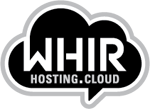How to Shut Down a Legacy Service without Losing Customers
In the context of a competitive fight over market share, it was an understandable strategic decision by EMC to shut down its Atmos cloud storage service back in 2010.
October 13, 2014


logo-WHIR
This article originally appeared at The WHIR
In the context of a competitive fight over market share, it was an understandable strategic decision by EMC to shut down its Atmos cloud storage service back in 2010. EMC has survived and thrived, and in 2014 a series of companies made the same decision. Cloud storage service closures were announced in March, April, and June by AVG, Canonical, and Dell respectively.
Closing down a legacy service means turning down revenue and if a company’s customers are frustrated during the process of migrating from a service a company is closing down, then the reputation of its core, continuing services could suffer.
This process is hardly new, however, and some well-established hosting and network service companies have been through it, and come out stronger. In fact, most of the longest established companies have dropped services along the way.
“In the late 90s it was kind of all things to all people,” New York Internet CEO Phil Koblence says in an interview with the WHIR. Back then NYI provided a range of services related to development, email, and even hardware procurement, which no longer make sense in its product portfolio.
“You can’t be in this business 18 years without having transitioned a lot…the only thing that’s the same is the person on the other end of the phone.”
A Range of Benefits
If closing a service means turning down money and taking on risk, then why do it? One reason is to eliminate the cost of providing legacy services, which can increase even as the service moves towards obsolescence.
“The goal is not only to offer relevant services to customers, but also making sure that we don’t bog down our technical support staff with some of these legacy services that while they might be noisy on the help desk, don’t necessarily provide our core customers with the solutions that they need,” Koblence says.
He gives the example of a managed email service formerly offered by NYI, which made sense in the past, but is no longer relevant to the managed colocation and large-scale managed hosting customers it serves.
The core customers of AVG, Canonical, and Dell likewise probably did not rely on those companies’ cloud storage services the way they do on their core offerings. These three companies will likely not miss their cloud storage divisions, and their customers won’t either, if their transitions are properly taken care of.
Putting Murphy’s Law into Practice
Coordinating a transition on a custom time frame between a legacy service provider, a new service provider, and a customer is bound to be a drawn-out process, Koblence says. He has learned from experience to expect the unexpected.
“What we try to do is offer an almost limitless transition period because everything is reputation in this business.” That transition period includes “months and months of notice periods and access to both systems,” he says.
Dell is using an extended notice period to prepare customers for the closure of its DellData Safe service. The closure was announced in June 2014, but will take place officially in June 2015. Canonical’s April announcement gave customers until the end of July to retrieve their data, a lead of four months. AVG gave five months when it closed LiveKive.
The amount of notice necessary to maintain positive customer relations will vary with the provider, service, and customer. The other elements of the transition will vary similarly, making for what Koblence describes as a painstaking process.
“The same is true for eliminating services or transitioning services in any way,” he says. “There’s a lot of psychology that goes into it in terms of basically coaching the customer through the transition process.”
Reputation Uber Alles
“If the goal of these transitions is to make sure that the customer is left with a better experience overall; it’s important that we make sure that the logistics of the migration is not something that makes them uncomfortable,” Koblence says.
All those pains are worth taking if it means maintaining a strong service reputation while shedding an unprofitable service. The weakest service in a company’s portfolio may affect customer’s perception of its core services. Assisting customers in transitioning to a service provided by a company which specializes in that specific service can improve overall customer experience.
Reputation can not only be protected by making a transition comfortable, it can be grown into brand strength with the increased focus on core services. When Cloudbees announced its closure of the RUN@cloud PaaS in September, it simultaneously rebranded as “the Enterprise Jenkins Company” to reflect its commitment to the open source continuous delivery software.
As demand for continuous delivery services increases, Cloudbees is positioned to leverage its experience, focus, and branding related to Jenkins, but it will have to ensure smooth transitions for the few hundred customers affected by its closure of RUN@cloud.
After all, Koblence reminds us: “you’re only as good as your last tech support experience.”
This article originally appeared at: http://www.thewhir.com/web-hosting-news/shut-legacy-service-without-losing-cusotmers
About the Author
You May Also Like







